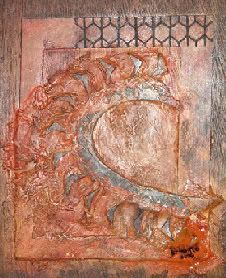
Celdran: 'Kulo' controversy shows art is alive
By Ira Pedrasa, abs-cbnNEWS.com
Posted at 08/09/2011 12:44 PM Updated as of 08/09/2011 12:44 PM
…but bishops call artist mediocre, klepto
MANILA, Philippines - The controversy surrounding the "Kulo" exhibit at the Cultural Center of the Philippines (CCP) shows that art is still a powerful tool to criticize social dilemmas, art enthusiast Carlos Celdran said.
While the exhibit has attracted negative criticisms, “it shows that the power of art has the power to create discussion and controversy…Just like the truth, art can sometimes hurt,” Celdran said in an interview with ABS-CBN News’ Punto por Punto.
As of press time, CCP has shut down its main gallery showing Mideo Cruz’s art pieces due to security reasons.
The content of the exhibit, such as a wooden penis protruding from a crucifix, did not bode well with some quarters. Last week, vandals defaced the exhibit and lambasted Cruz by calling him names.
Celdran, who also caught the Church’s ire when he denounced in a mass its side of the Reproductive Health debate, said: “God exists in this world, not inside the third floor of the CCP. To claim so is a misdirection of what religion is all about.”
He added: “If you just look at artwork and see what offends you, ambabaw mo.”
'Sick man posing as an artist'
In the same show, retired Archbishop Oscar Cruz said a person would be offended as well if the same is done to his or her face.
In his blog, he called the artist a “consummate sacrilege.”
He also lambasted the CCP for “displaying the radical vulgarity instead at nurturing and promoting Filipino positive cultural values as defined by its Mission Statement.”
Pampanga Auxiliary Bishop Pablo Virgilio David agreed, even calling the artist’s case “like that of a kleptomaniac who derives pleasure from stealing, or a sadomasochist who draws fulfillment from either hurting people or being hurt by them.”
He said the artist knows how to get the media attention despite his mediocre art exhibit.
David also said the artist needs psychiatric help, focusing on his complaint about the people’s “violent reaction without seeing the psychological violence that he himself inflicts on the people, in the first place.”
He called the artist a “sick man posing as an artist.”

















































































































































































